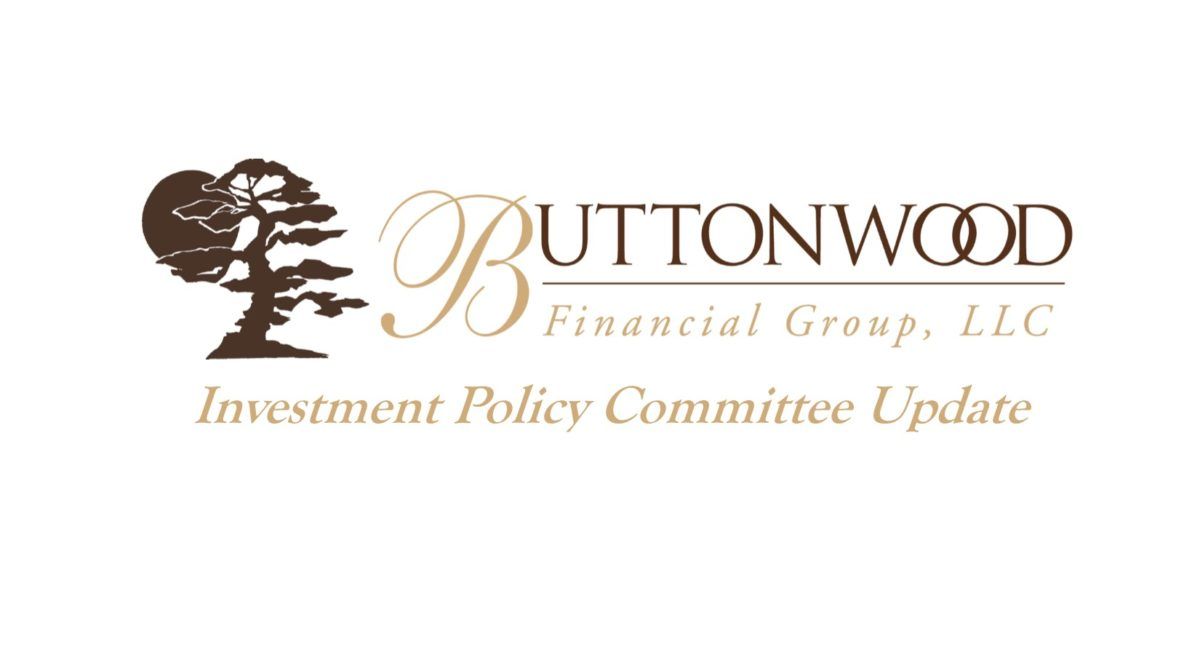Buttonwood Investment Policy Committee Update – March 2022
An active world calls for proactive asset management:
Buttonwood’s core investment allocations are designed to take advantage of longer-term investment views with the flexibility to take advantage of shorter-term trends. We believe combining these strategies will allow us to produce a more consistent rate of return through economic cycles.
Following lockdowns, in early 2020 we focused on our theme of “participate but defend.” We rebalanced portfolios to bring allocations in line from the market volatility caused by covid. We also proactively took advantage of tax benefits from tax loss harvesting. By early 2021 we continued to add to stocks based on strong underlying fundamentals and were leaning further into cyclicals as part of the recovery. In mid ’21 we were expanding exposure to sectors we believed would benefit returns with rising inflation; commodities, energy, corporate credit and TIPS. Late year , with several stock sectors starting to show weakness, we remained with our reflationary themes, but shifted to less active risk and reduced sensitivity to sector specific exposure.
On our path to more consistent returns, generally we tend to stay within 10% of target allocations. For example, our overall stock exposure in a 60% stock/ 40% bond allocation will typically fall between 55% and 65% at any given point in time. We use this 10% to adjust exposure to regional, sector, factor or changing investment themes.
As we moved into 2022, we believe we are continuing the transition from earlier stages of the economic cycle to mid cycle stages. Not unexpected, we have seen major stock indices join sub sectors, and stock markets as a whole decline. In early February we completed our first rebalance of the year (for both taxable and retirement account assets) to reduce our overweight to stocks and exposure to Europe. We also reduced credit exposure in bonds and added duration to act as a ‘shock absorber.’
Positioning for the fluid implications of the Russian/Ukraine conflict in Eastern Europe
In response to the events unfolding in Eastern Europe, our March rebalance (only for retirement account assets) focused on recalibrating exposures to reflect the changing macro environment. While the immediate trajectory of the conflict remains highly uncertain, it is likely to have lasting economic and financial consequences.
In summary, we expect weaker European industrial production and higher commodity prices to be the primary macro transmission channels – adding fuel to the supply-constraint-driven-inflation phenomenon already impacting global economies.
In Europe, interruptions in trade are interfering with industrial production schedules, and dampening investment, while pronounced energy price increases are depressing consumer disposable spending and causing more cost-push inflation. Globally, while less severe relative to Europe, commodity price increases place net negative pressure on real growth. Based on these impacts, we are reducing European-heavy developed market equities and cutting growth-outlook-sensitive global financial equities to fund increases in US equities and commodities.
We will continue to provide ongoing updates on our views and investment positioning. Should you have specific questions about our strategy, please let us know and we will make sure to review details at our next meeting. And while we don’t recommend fixating on short term market fluctuations, if you would like to check specific investment performance across all your accounts, our Buttonwood Portal is available 24/7. Or you can contact us, and we will provide reports specific to your questions and financial life.
Thank you for your continued trust and allowing us to coordinate your asset management as part of our Family CFO services!
The post Buttonwood Investment Policy Committee Update – March 2022 appeared first on Buttonwood Financial Group, LLC.
Recent Buttonwood Articles

Are you ready to explore the benefits of your very own Family CFO?





